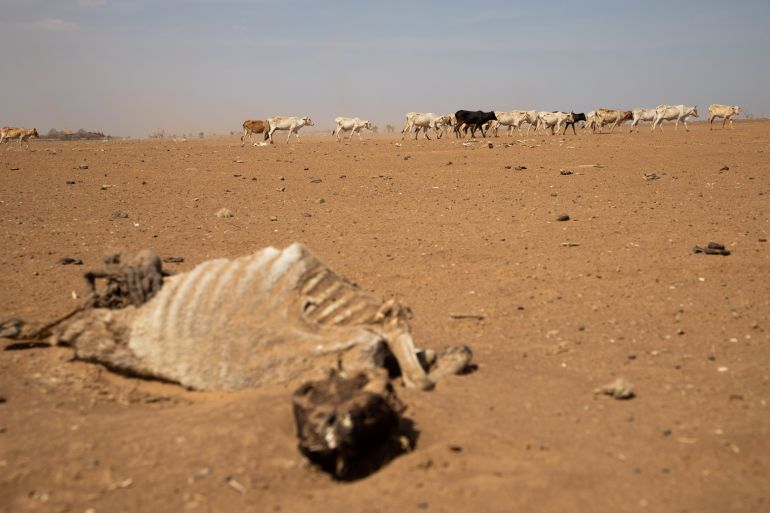Drought crisis puts Horn of Africa ‘on the brink of catastrophe’
The drought in the Horn of Africa could be catastrophic for people and livestock.

In a region where livestock and agriculture are the mainstays of people’s lives, droughts in the Horn of Africa have wrought havoc as more than 1.5 million heads of cattle died and cereal production nosedived drastically.
Speaking at a virtual news conference on Monday after a visit to the region, Food and Agriculture Organization Director of Emergencies and Resilience Rein Paulsen told reporters that a “very small window” exists for taking urgent action.
“We are most definitely now sitting on the brink of catastrophe,” said Paulsen, adding that the agency had put out a call for millions in funding it needs until June this year to support their work in the region, which includes parts of Somalia, Ethiopia, and Kenya, such as providing urgent fodder and water to keep livestock alive.
It remains to be seen whether the region will receive adequate rain between March and May, after “extremely poor” short rains that came between October and December last year – the third consecutive failed rainy season with lower average rains, a worrying concern for vulnerable households.
The result of the drought meant that overall cereal production for the last rainy season in southern Somalia was estimated to be 58 percent lower than the long-term average, Paulsen said. In agricultural areas in marginal coastal zones in southeastern parts of Kenya, “we’re looking at crop production estimated to be 70 percent below average”, he said.
In addition, most water sources that have usually been resilient to climate variability have dried up in Kenya, he said.
Paulsen said $130m in funding is essential now to provide cash for people to buy food until production resumes, to keep livestock alive, and to provide drought-resistant seeds that can help farmers reap a harvest.
“We have a window to the middle of this year – to June, which is a very time-sensitive, narrow window for urgent actions to scale up to prevent a worst-case scenario,” Paulsen said. “Agriculture needs a lot more attention. It’s central to the survival of drought-affected communities.”
During his visit to the region, Paulsen said: “We saw animals dying together with their farmers, and the numbers I think are quite shocking.”
In Kenya alone, 1.4 million livestock died in the final part of last year as a result of drought, and in southern Ethiopia, about 240,000 livestock died as a result of drought, he said.
Earlier in February, the UN World Food Programme said drought has left an estimated 13 million people in the Horn of Africa facing severe hunger amid the driest conditions in four decades. It is seeking $327m to look after the urgent needs of 4.5 million people over the next six months.